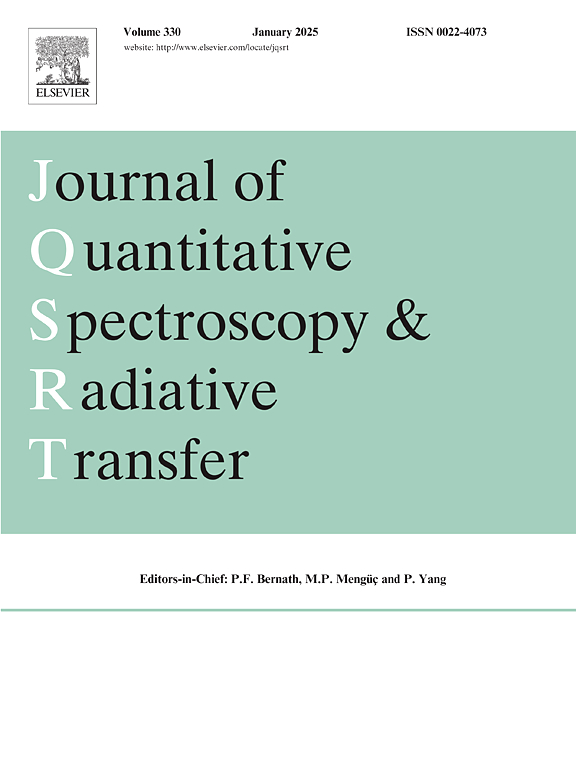Monte-Carlo-based simulations of radiative transfer in photovoltaic solar farms: Towards fast and accurate parameterizations in weather and climate models
IF 2.3
3区 物理与天体物理
Q2 OPTICS
Journal of Quantitative Spectroscopy & Radiative Transfer
Pub Date : 2025-03-03
DOI:10.1016/j.jqsrt.2025.109417
引用次数: 0
Abstract
Photovoltaic (PV) solar farms, composed of arrays of photovoltaic panels, play a vital role in our effort to reduce the reliance on fossil fuels and mitigate global warming. Meanwhile, these panels alter surface radiative properties and can affect the local surface energy budget. To assess the influence of PV solar farms on the climate, previous modeling studies simply assumed flat solar panels lying on the ground and modified surface albedo to mimic the radiative effect of large-scale solar farm deployments. Here, we developed a Monte-Carlo-based radiative transfer model that can more accurately capture the role of the complex geometry of a real-world PV solar farm in 3-D radiative transfer. Specifically, solar panels are separated from the ground, tilted and elevated, with their own surface reflectance and emissivity. In this way, the scheme inherently accounts for the radiative transfer between panel and ground and between panel arrays. The model can be tailored to specific PV solar farm configurations through six adjustable input parameters, including panel tilt angle and spacing. A sensitivity analysis of both shortwave and longwave radiative processes within the farm reveals that front panel albedo (emissivity), ground albedo (emissivity), and panel area fraction determine the overall reflectivity (emissivity) of the entire solar farm site. Based on such Monte-Carlo calculations, a set of lookup tables was then constructed for fast parameterizations in the numerical weather models or climate models with desired computational efficiency.
求助全文
约1分钟内获得全文
求助全文
来源期刊
CiteScore
5.30
自引率
21.70%
发文量
273
审稿时长
58 days
期刊介绍:
Papers with the following subject areas are suitable for publication in the Journal of Quantitative Spectroscopy and Radiative Transfer:
- Theoretical and experimental aspects of the spectra of atoms, molecules, ions, and plasmas.
- Spectral lineshape studies including models and computational algorithms.
- Atmospheric spectroscopy.
- Theoretical and experimental aspects of light scattering.
- Application of light scattering in particle characterization and remote sensing.
- Application of light scattering in biological sciences and medicine.
- Radiative transfer in absorbing, emitting, and scattering media.
- Radiative transfer in stochastic media.

 求助内容:
求助内容: 应助结果提醒方式:
应助结果提醒方式:


